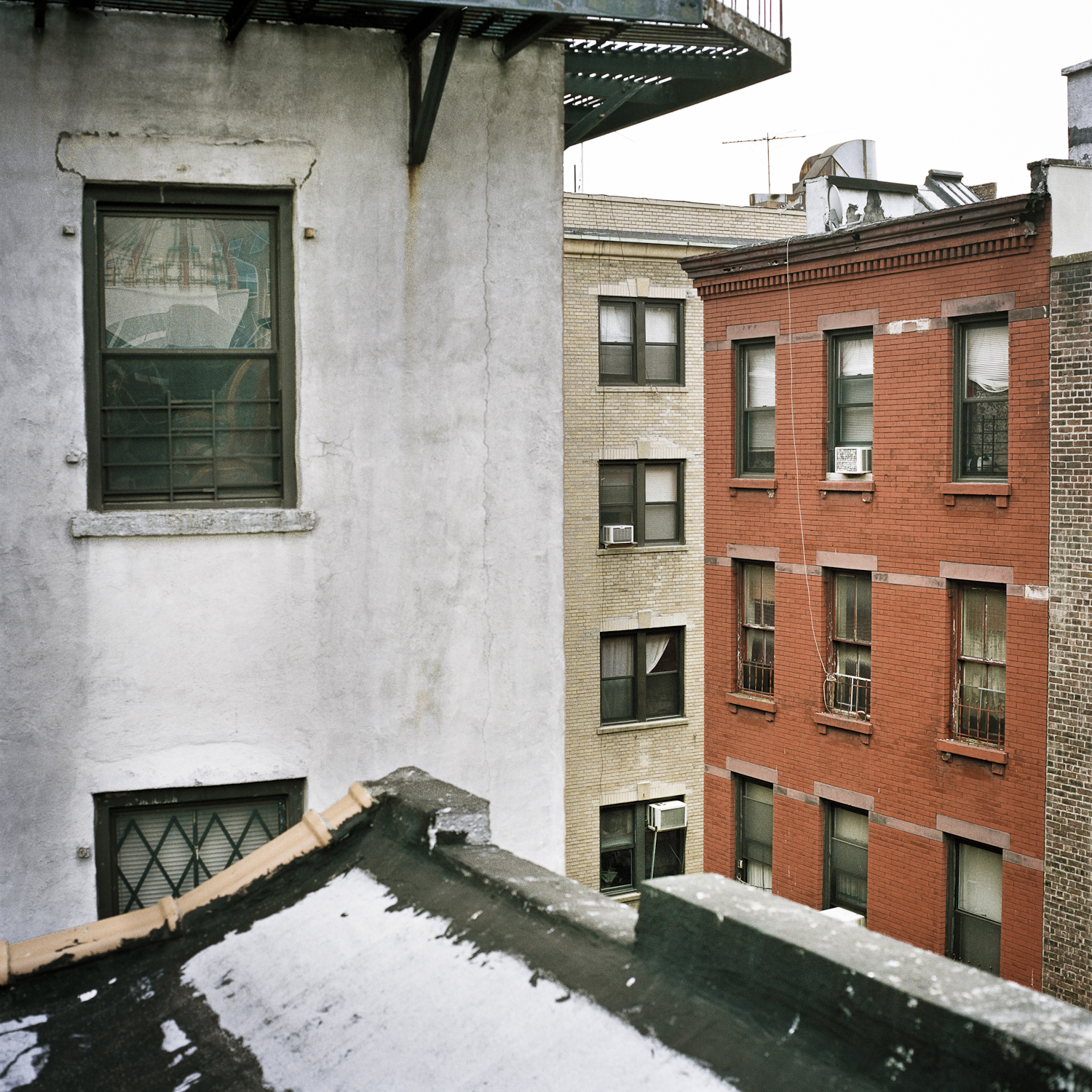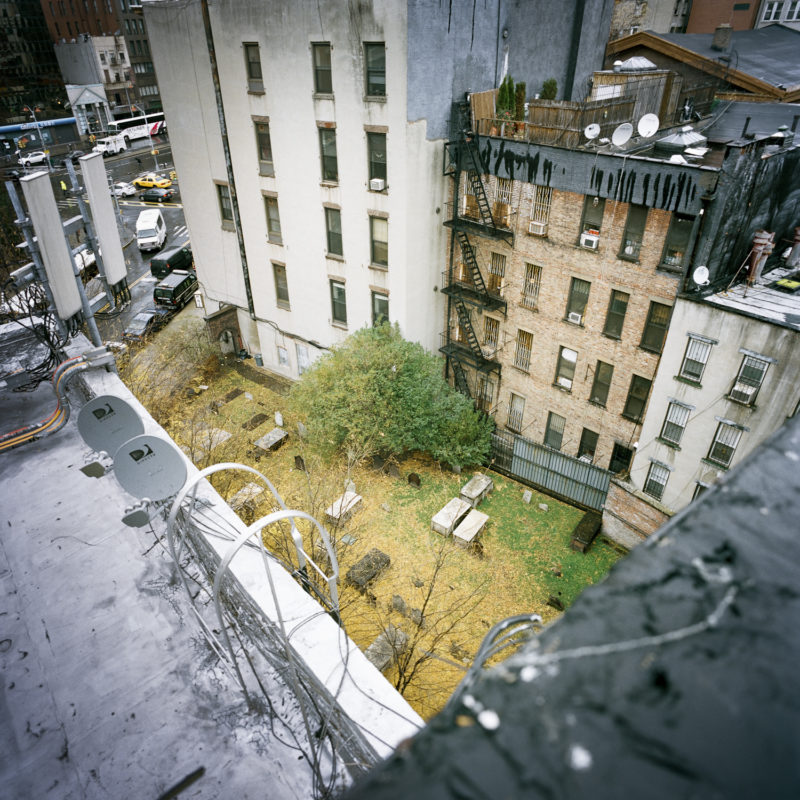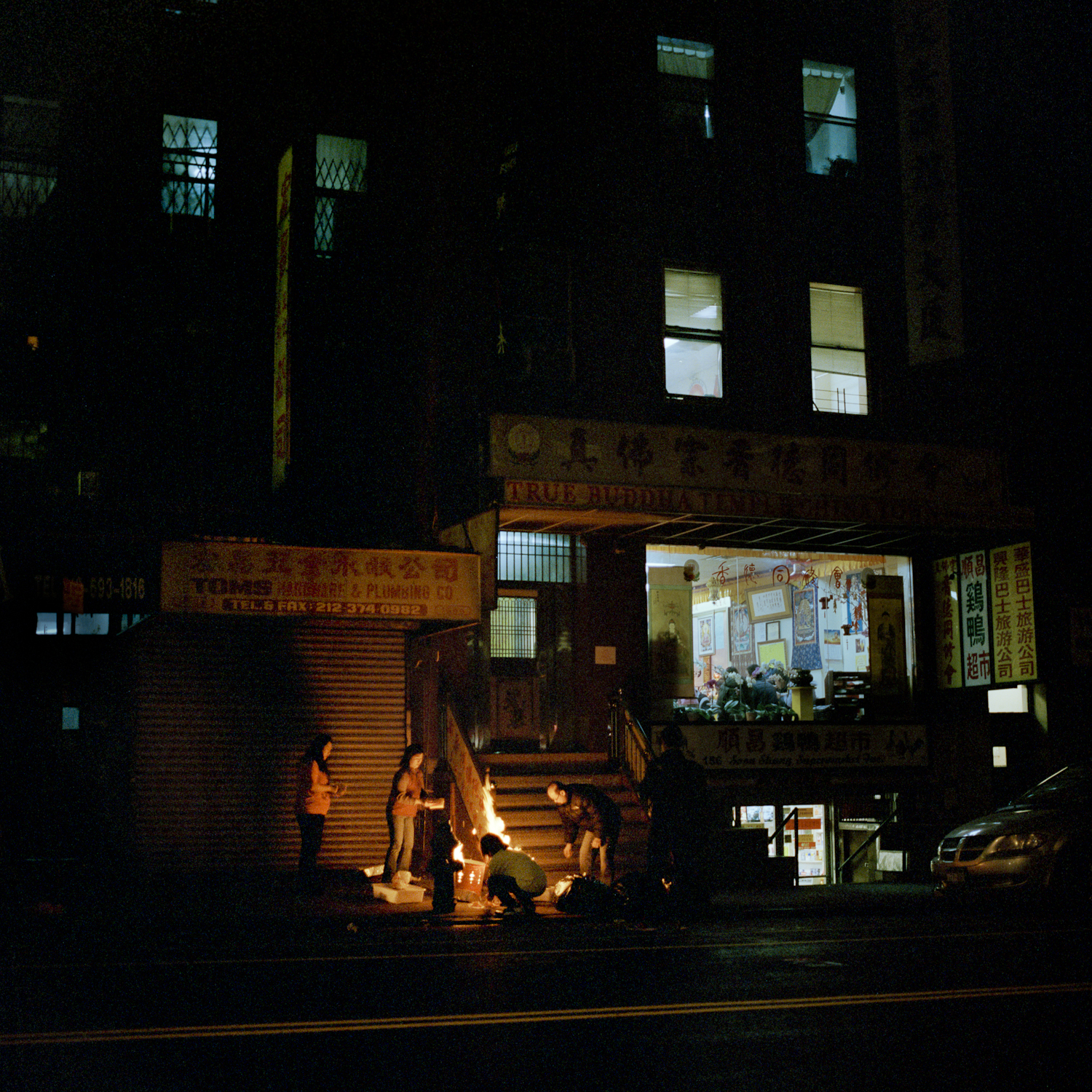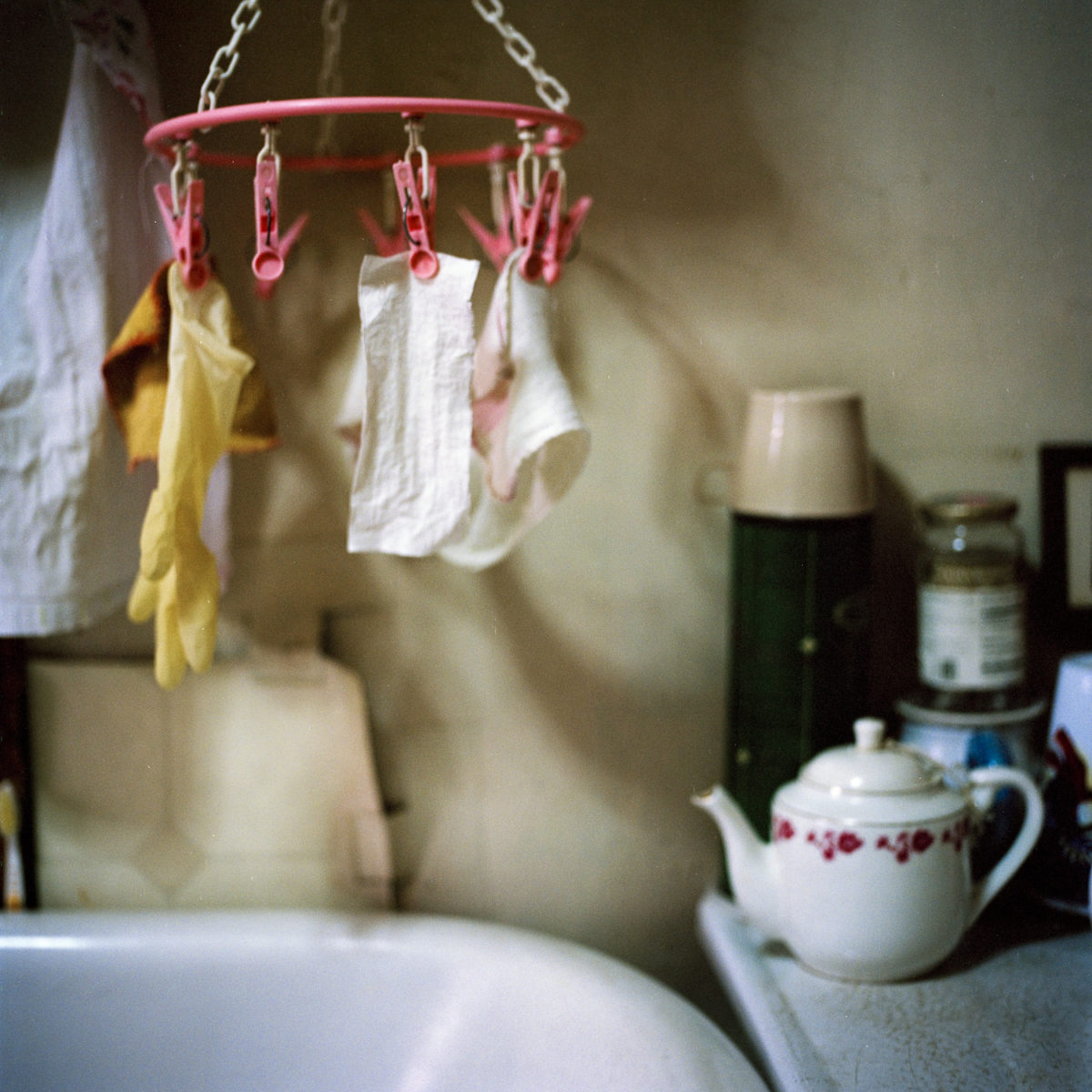
Manhattan’s Chinatown might be best known for decades-old dim sum parlors, hawkers announcing sales of handbags along Canal Street, funeral parlors selling joss paper along Mulberry Street, manga stores, street vendors hawking dragon fruit and gaggles of senior citizens, playing cards or practicing taichi, in Columbus Park.
But it is now also a symbol of inequality, and of how one American metropolis is in truth two cities. According to 2017 Census data, more than 27 percent of residents in Chinatown and the Lower East Side live below the poverty rate, nearly double the city-wide rate of 14 percent. Four-in-ten children and roughly one-third of senior citizens in the neighborhood live below the poverty line. Many of Chinatown’s residents are the last working-class holdouts south of Central Park. Some of the community is currently protesting the four new mega-towers that have been built in the neighborhood. The Department of City Planning rejected a community-led zoning proposal there in 2015, and residents are still waiting for height restrictions and zoning against these sorts of luxury developments.
Even as some long-time landlords refuse to fix housing violations, administrations starting with Mayor Bloomberg’s encouraged real estate speculation, and developers built new high-rise, luxury condos and hotels in Chinatown. As a result, many of the long-time lower-income residents have been displaced by wealthier ones. According to the US Census, the neighborhood lost 17 percent of its Chinese residents between 2000 and 2010. According to community organizers, this is happening in San Francisco and Boston Chinatowns as well. However, because those Chinatowns are smaller, census tract data don’t properly reflect changes there as well.
Manhattan’s Chinatown is now smaller than those in Flushing, Queens and Sunset Park, Brooklyn. Still, it remains a strong cultural and economic center for the Chinese-American diaspora. Each weekend, families drive in from the suburbs to gather, eat, and stock up on groceries; the kids attend dance and language classes. Each Tuesday and Wednesday, young workers come back via so-called Chinatown buses from Chinese restaurants and strip malls up and down the East Coast.
I started writing about the neighborhood in 2010, when I lived there. Although I am a university professor, I didn’t conduct these interviews for academic research; I was just trying to get to know my neighbors better.
As an academic who studies community mobilization, I attended a lot of local planning meetings and worked with local nonprofit groups, like the Hester Street Collaborative. But in interviews, I stuck to asking interviewees about their individual histories and memories of the neighborhood. My poem below, “Lafayette Street,” for example, draws upon these memories, like playing and working in mothers’ garment factories as children. As their fathers’ restaurant jobs gave them no benefits, their mothers were important wage-earners. With no formal childcare, garment factories were also de facto daycare centers. Children hid in clothing bins whenever union inspectors came by. They worked hard, but as kids, they also swung from factory clothing racks as if they were monkey bars. They spoke of favorite local eats and after-school snacks like pork buns and knishes.
The photos that accompany these reported poems were made over the course of four years after a fatal tenement fire in 2009 consumed the photographer Annie Ling’s home in Chinatown. They are, like the poems, about how lower-income residents attempt to maintain some personal space and dignity, and the continued displacement of neighborhood institutions, and the importance of liminal spaces—rooftops, fire escapes, stairwells, hallways—in a neighborhood with little green space. The photos and poems undermine Asian-American stereotypes about model minorities and perpetual foreigners.
—Celina Su
Division Street

1. They met in 1767
(one grid meeting another).
On maps, the street first appears amidst grasses and trees. Then, it separates the “Jews’ burial grounds” (in 1776) and names and fruits from a numbered, diagonally drawn grid (parallel to the island’s coastlines). Great Queen eventually became Pearl, Chatham became Park Row. Division remains.
2. They met in 1903
(one lost tribe meeting another).
They dined together that spring evening in May, a Chinese community group hosting a benefit for the local Russian Ashkenazis, for victims of the Kishinev pogrom the previous month. For, to them, Kishinev was “a recurrence” of Blagovestchensk, Moldova in lieu of Manchuria, 49 an emblem of 5,000, a beating evoking a drowning.
Joseph Singleton (aka Chew Mon Sing, aka Zhao Wansheng), Guy Maine (aka Yee Kai Man), Dek Foon, and Jue Chue (the JP Morgan of Chinatown) led the evening. At Mon Lay Won, the Chinese Demonico’s, on Pell Street, they made sure that no shellfish or pork was served. At the theatre on Doyers Street, a sign outside boasts of “seats reserved for Americans.”
Joseph Zeff and Herman Rosenthal spoke of camaraderie. Bertha Kalish and a Chinese troupe performed. They exchanged notes on overthrowing an Empress Dowager in a central kingdom, on escaping the Czar for a promised land. The difference between an exclusion act and a pogrom is not social class, nor dress, nor Anglicized names, but, perhaps, who might eventually become White.
For this street was made for meeting, or rejecting, fate. For they turned away from Russia, towards Japan, for the officers could have walked across the Amur River “on the bodies of the floating dead.” These days, the museum hosts Egg Creams & Egg Rolls & Empanadas parties, the historic district its Marco Polo Festival for Little Chitaly. Were the Jewish burial grounds preserved? Were the bodies disinterred, placed in peace elsewhere? Solidarity is but a food truck paradise, a food fair with string lights, precarious almost an anagram of precious.
3. They met in 2011
(the missing generation).
They married on a Tuesday, the one day they could both come back to New York, away from where they live the rest of the week—in Buffalo, Nashville, Baltimore, Boston, Minneapolis. One strip mall after another, Panera Target Best Wok Payless, interchangeable cramped apartments next to the “world’s best pizza.”
She is learning words like “hibachi,” like “fusion.” Her wages are higher, not quite living, then. At least, as a woman, she is always hired with a buddy. Before the conflagration, safety in numbers.
I come “home” on the Chinatown bus, surrounded by other workers and college students visiting friends, young Europeans backpacking through the US. Even with my eyes closed, I locate where I am by the feel of the roads rumbling beneath our seats, by the sharp turns of the streets.
Eventually, she did not say, she will have two children, and grandparents and neighbors will take them to school, and she and her husband will greet them on Tuesdays. Each multiplication its own longing.
I eye the vans to Flushing on one end of this little street, the statue of Confucius on the other. I focus on the elaborate, gauzy portraits standing outside each storefront. Curled tendrils, payot-like, frame each bride’s face. Baby’s breath.
Market Street

Where to belong? What to hold onto?
Identity, past, dreams
in fragments
are lost
in time
and space.
Reaching for wholeness, striving to survive,
to sustain loved ones left behind.
Chasing a dream in foreign lands, perpetually in flight or in fight Ð
the silent outcry of the Chinese Diaspora.
Alien in exile with no fixed home.
放心 (fàngxīn), put-heart. To be at ease. Where to place these hearts, but hanging from the barb of this fishing hook, from laundry lines on our graffitied rooftops, in the stairwells. I look down from my apartment, see a crab exiting the seafood store before scampering down the sidewalk, towards the East River.
关心 (guānxīn), turn-off-heart. To care. To shut one’s heart is to shed conditionals, to open it is to have a great time. 開心 (kāixīn), open-heart, to feel happy. To love her is to barely contain my anxieties, becoming together, opening and closing each day with cloud-filtered certitude, taking liberty with form.
小心 (xiăoxīn), small heart. Careful. Because to shrink one’s heart is an imperative. To close one’s eyes is to ignite one’s photographic memory, to remember the praying mantis standing next to the cigarette butt against the blue wall, its scale like that of Godzilla superimposed upon the Chrysler Building. My eyes opened differently then, I had a different way of believing then.
It is elemental, a root, a muscle, a multiplier. In the 心 radical, the ventricles form the base, and the aorta and arteries shoot out of the top. 忘 (wàng). To forget. Because the death of something sits on my heart, weighs on it, so that I am losing my mind. Will I remember her voice, its texture. How to 愛 (ài), to love. In traditional form, one breathes into the heart in a gracious motion. In simplified form, 爱, a hand sits on friendship, and the heart disappears. Not a platonic ideal, but a cynical, transactional exchange of organs. If 3√(8) is two, then 心√(remembrance, but not nostalgia) must equal these swing sets, my daily wages, the voicemail of hers that I accidentally deleted. To demand a complete transformation is to lose an alphabet, to lay phonetics to waste.
愁 (chóu). To worry about. Because a tree has been lit on fire, atop a heart. Because we read lines in order to read between them, find the cores of our being, even without courtesy, or courage, or cordiality. Because, even when we articulated our grievances in English, they could not see, nor hear, our hearts in conflagration, in autumn. A seasonal affect is not a mood but a forest lit by a yellow moon.
点心 (diănxīn), dot-heart. Snack. Because I saw a noodle maker on an early winter morning, before dawn. Throwing joss paper and fruit into the flames of what was a big barrel of soybean oil. White rice flour covered him from head to toe. Because, I thought, he was an apparition, a ghost feeding ghosts. The thinnest sliver of his heart, the remainder to be consumed by calloused grief.
Lafayette Street

He worked in a local factory with his mother, darting between clothing racks, swinging from them. Playing hide and seek with half his classmates.
She made her money—a penny a garment—by using a long chopstick to turn the baby doll dress fabric belts right side out. She couldn’t reach the foot pedal, not even with her tippy toes, until the third grade.
The factories had no set hours, so their mothers could take a break as the school bells rang, come back with their children in tow, and work some more. Their mothers brought home the bread, so to speak.
He hid from investigators who came by to make sure there were no child workers, at the bottom of a giant basket of clothing, in a cardboard box out on the fire escape.
This was before Alexander Wang and Derek Lam arrived, before 9/11, before their mothers’ jobs disappeared, before we left. It was when the only act of creation others recognized lay in production, when an expert fold was not a design feature but a mere trick of expediency. In other words, a withholding, a motherly love.
For disappearance is mobility, is an act of, is an act. As teenagers, they stopped working in the sweatshops, couldn’t wait to get out of the neighborhood. “To this shithole of a room,” he inscribed, “Good-bye, and sorry about these walls.”
To leave is not to turn one’s back upon one’s family, but to manufacture a different light. Golden hour casts shallower shadows there. Still, the neighborhood beckoned, back to the institutions that enabled their flights. They sang polyphonic prodigals, and yet their escape routes circumnavigated home. They thought that they had cut their threads, but they had been stitched into their skin, onto the backs of their ankles, into the smalls of their backs, between their shoulder blades, embroidered in the shape of piety, tattooed in the name of grace.
P.S. 42

That’s what I remember now: That you couldn’t escape. That she was really cool, with bell bottoms and long hair. She was trained in open classrooms. [These bright fluorescent lights, a link to the outside world.]
She gave us extra math tutoring during what would have been a lunch break. They didn’t have the missionary syndrome (coming down here to save “the poor Chinese people”), a white savior complex. That you make your own choices. With guinea pigs, frogs, baby chicks. [The school bell rings.]
We played crab soccer, because there wasn’t enough room for regular soccer. We would line up against opposite walls, ready on all fours. Roll call: 1, 4, 5. That they emphasized good sportsmanship, not to tease. That we would crawl out on our backs, backwards like crabs. [Rolling back on the office chair.]
The time I was put in the closet for being defiant during music class. That was when I realized I don’t scare easily. That I admired the wrought iron vents on the coat closet doors. [Returning a wave to a student, bending down to meet his eyes: Hi!]
That during parent-teacher conferences, my mother brought wonton soup for all the teachers, because she knew it was a long night. That when I didn’t get a reader, she gave the teacher a piece of her mind: Just because my daughter’s last name is Wong, doesn’t mean that you don’t give my child a reader, that you ran out. No such thing. [An emphatic nod. She was a real tough cookie.]
That I got a reader. On cold winter days, a 25-cent knish shaken with salt in a paper bag. That it was the best thing. That I learned to read and write. [A sheer purple curtain, tied to the side in a knot.]
Roll call: The knish man, the pickle man across the street. Mr. Plaskowitz, Mr. Carrow. Ms. DiSilvestro. Ms. Moringelli, Ms. Crane. Ms. Wong. Presente. That’s why I came back. I want to be here.
This piece was supported by the journalism non-profit the Economic Hardship Reporting Project.




